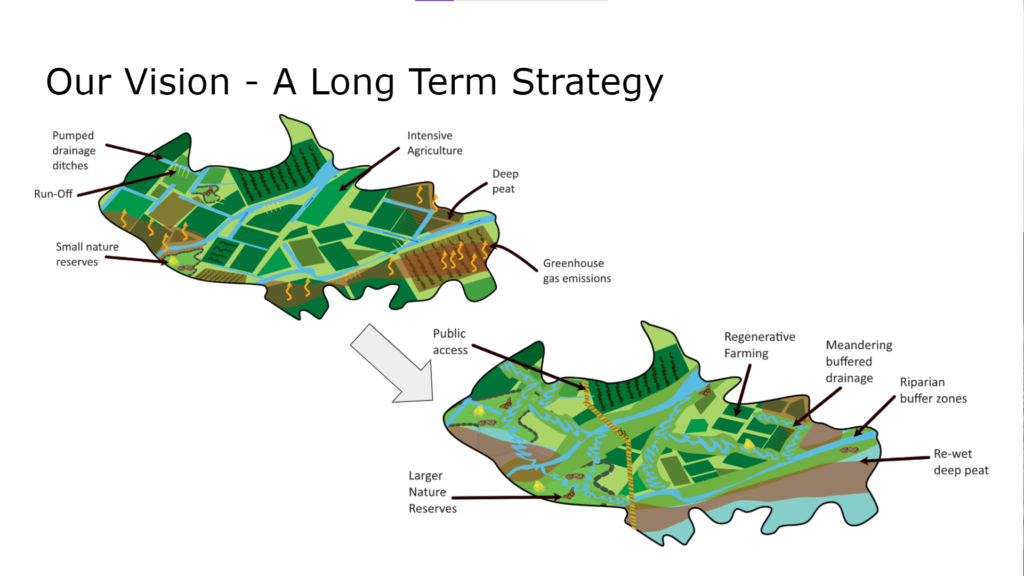Team 2A: How might we ensure fenlands contribute to mitigation and are more robust to the impacts of climate change?
Our nature-based solution to climate change in the fenlands was patchwork peatland restoration across the entire Fenlands landscape.
Part 1
Deep peat restoration and catchment management.
Peat soils cover 24,000 ha of the Fens, and are eroding at a rate of 2 cm per year. Peat soils release carbon dioxide due to ploughing and run-off, so are a priority area for restoration to ensure the fenlands are a carbon sink.
We planned to raise water levels to rewet deep peat, retore fenland habitat and encourage reed bed filtration. This would transform areas of deep peat from a carbon source to a carbon sink, enhance the environment, reduce run-off pollution and support biodiversity.
Part 2
Encourage sustainable practices in buffer zones around original and restored fenland, and ensure habitat connectivity.
The Fenlands is important for agricultural production in the UK; farming is essential to the lives and livelihoods of local people so must continue, but can be made more carbon neutral. We propose introducing buffer zones around nature reserves where “wet” farming practices like growing Sphagnum moss can be carried out. This will also reduce edge effects from intensive agriculture affecting the nature reserves.
Further to this we would advocate for the use of regenerative farming methods in surrounding farms to reduce greenhouse gas emissions from the peat soil. Methods such as cover crops, crop rotation and alternative tilling methods would minimise soil disturbance, prevent soil erosion and maximise nutrient diversity. These methods have been shown to maintain or produce potentially higher yields in the long term. Regeneratively farmed farmlands are also more resilient to stress – something the fens experience regularly from droughts and flooding.
Landscape connectivity is also vital for preserving fenland biodiversity, allowing species to disperse between core habitat zones. Habitat corridors through farmland would be an important part of our landscape management plan.
Part 3
Public engagement.
We want to actively engage local people both in the restoration process, and in enjoying and managing the landscape following restoration, as we believe is key to the project’s success. It may also help to address local issues e.g., job creation and greater spending through leisure, tourism and land management will help stimulate the local economy and will help to reduce local unemployment rates, which are currently above the Greater Cambridgeshire average. Greater access to a healthy natural environment, through nature trails, visitor centres, boardwalks and active public engagement strategies, which will be a part of the scheme, will also help to improve local health and well-being.

